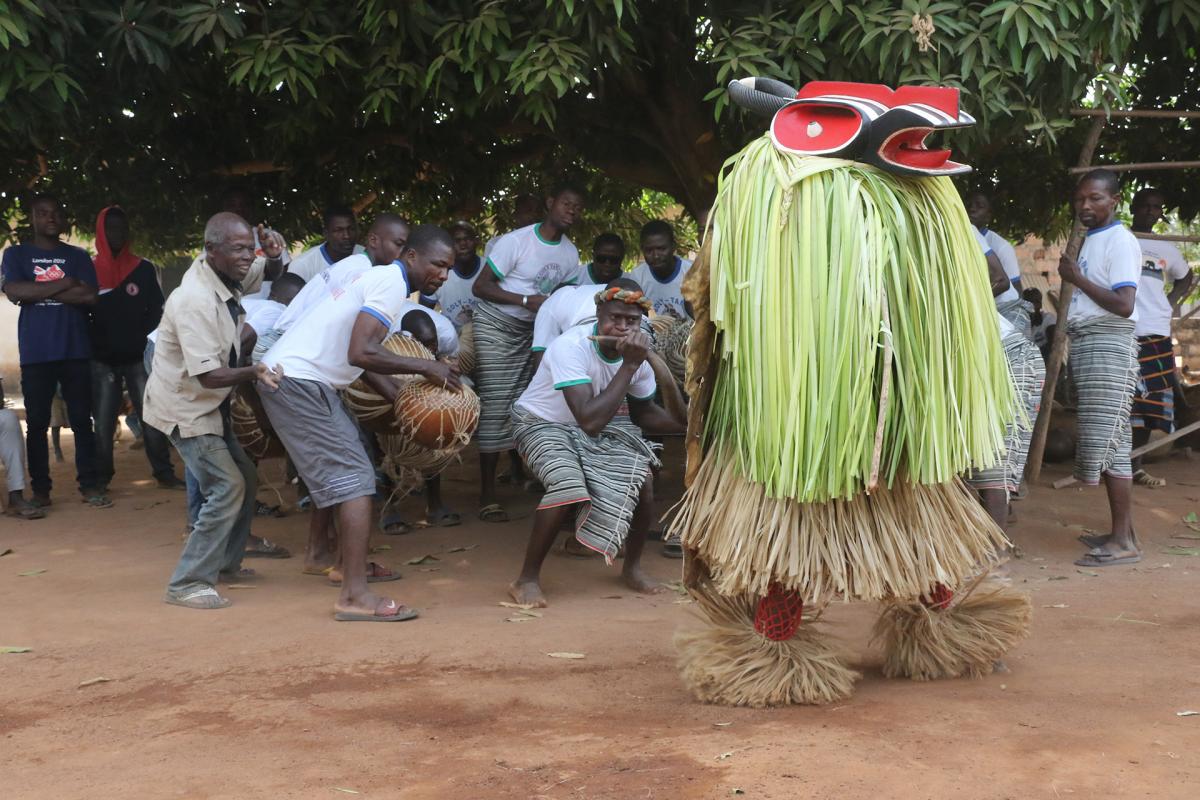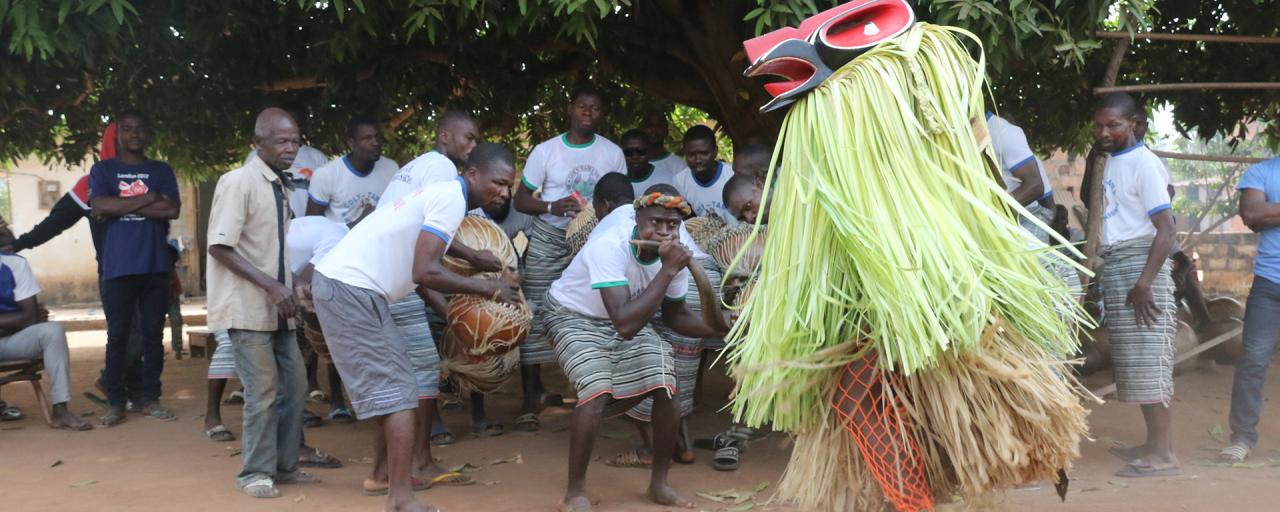Submitted by SafariADV on Sun, 2019-02-17
We are at Bouake in the Ivory Coast, this morning we visited the local market, we got lost among the goods and people and it was a lot of fun.
But after the market we get into the car and go to a Baule village; it is not a traditional village, probably there are none, or they are in remote areas difficult to reach; but we did not come here to visit the village.
We park the car and go into the village, they were waiting for us and they let us find some chairs where we can sit.
There is a very specific reason why we came here: to attend the Baule dances.
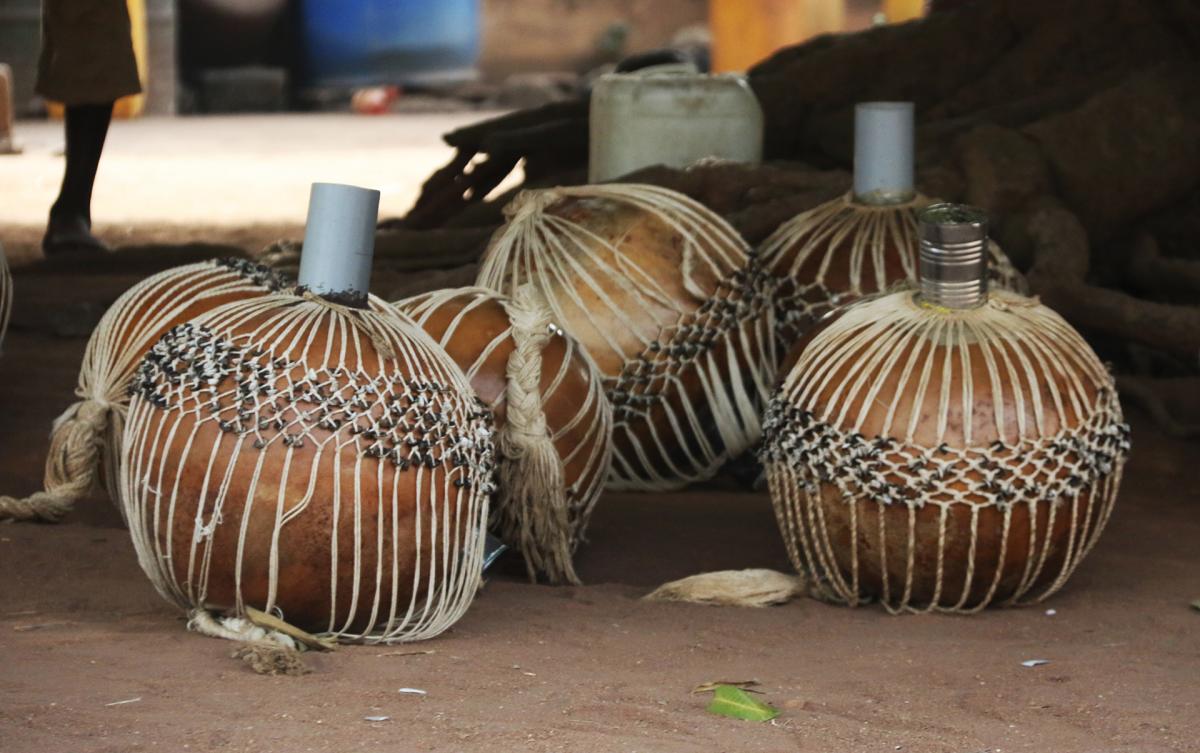
The Baule, even if, in some respects, have adopted a Western lifestyle, have maintained some traditional customs, undoubtedly among them the dances, that they perform at certain celebrations, such as births, weddings and funerals and other moments of joy; we came here just to attend one of these dances, they are not really celebrating anything, but they agreed to dance for us, replicating exactly what they would actually do.
We sit down and a group of men starts to play shaking huge pumpkins, covered with shells and seeds, they play some small drums, that are beaten with wood and, with a piece of iron, they make noise on a kind of large metal grater; at a certain point they also start to sing, the rhythm is engaging and it is pleasant to listen to them.
At one point a mask arrives, she wears a straw skirt, also has straw at the ankles and wrists, and also has a fabric shawl on the shoulders; she wears so many bells on her ankles and on her face she has a yellow mask surmounted by a statue that in turn supports a snake.
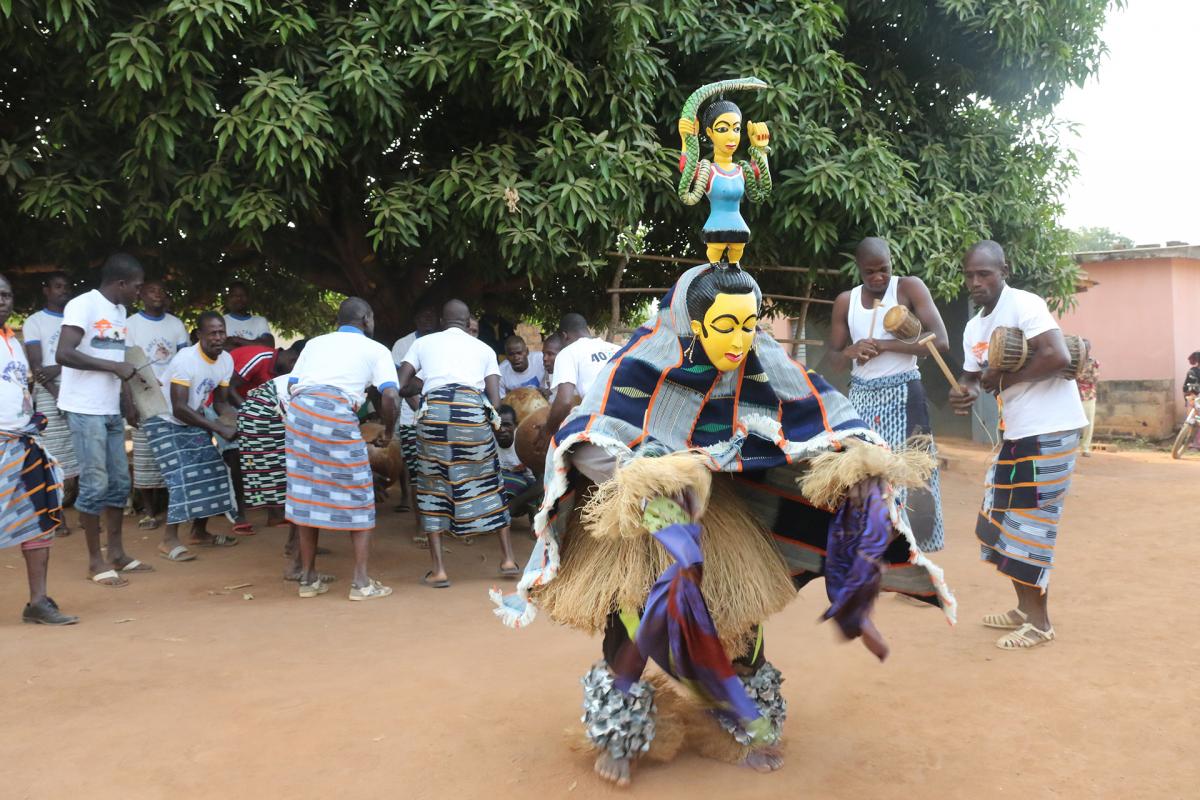
She begins to dance to the rhythm of the music, making the bells ring at her ankles and shaking her hands, some musicians with the drum follow or precede her giving her the rhythm for the dance.
At a certain point she approaches some people who are attending the dance and touches them with her hands; they tell us that if the mask approaches and touches a person this brings good luck, but if a person approaches the mask and touches her it is a sign of misfortune.
She approaches some people in the village and then heads towards me, she approaches and kisses me three times; well we hope that they are right and that it really brings good luck!
This dance we have seen is called Mblo and it is expected that it is always danced only by one mask at a time.
When this mask moves away two more masks arrive, their appearance is a little different: they are entirely covered with straw and have a red wooden mask on the face, one is flat, and represents a masculine mask, like the one we bought yesterday from some artisans, the other is convex, like the outline of a human face, and represents a female mask.
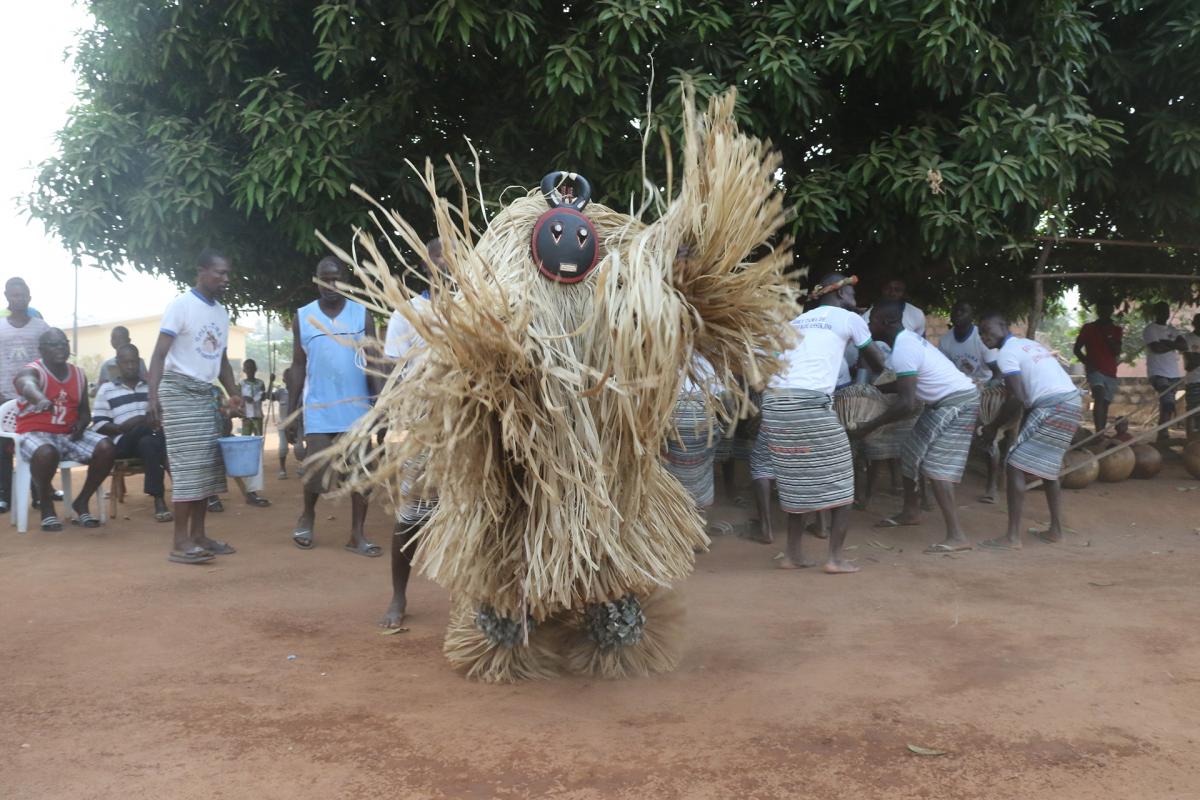
These masks launch themselves, one at a time giving themselves the change, in a frantic spear, accompanied by the pumpkins with the shells and seeds, by the drums and also by the sound of the kudu horn.
The pace is urgent and engaging and the speed with which the masks move, stamping their feet on the ground, is hypnotic and truly spectacular!
This dance is called Goly.
Soon after comes another mask, this is also a mask of the Mblo dance, in fact she is alone and wearing a straw skirt and a large cloth on the upper body, as well as having the bells at the ankles and straw at the ankles and at the wrists, she is holding two long pieces of cloth; the wooden mask on the face looks like a woman, it is pink, it has a typical African hairstyle and wears hanging earrings.
Even this mask launches in a dance to the rhythm of the pumpkins and the drums, while dancing, she makes the pieces of cloth in her hand rotate, in the photographs they create a beautiful effect.
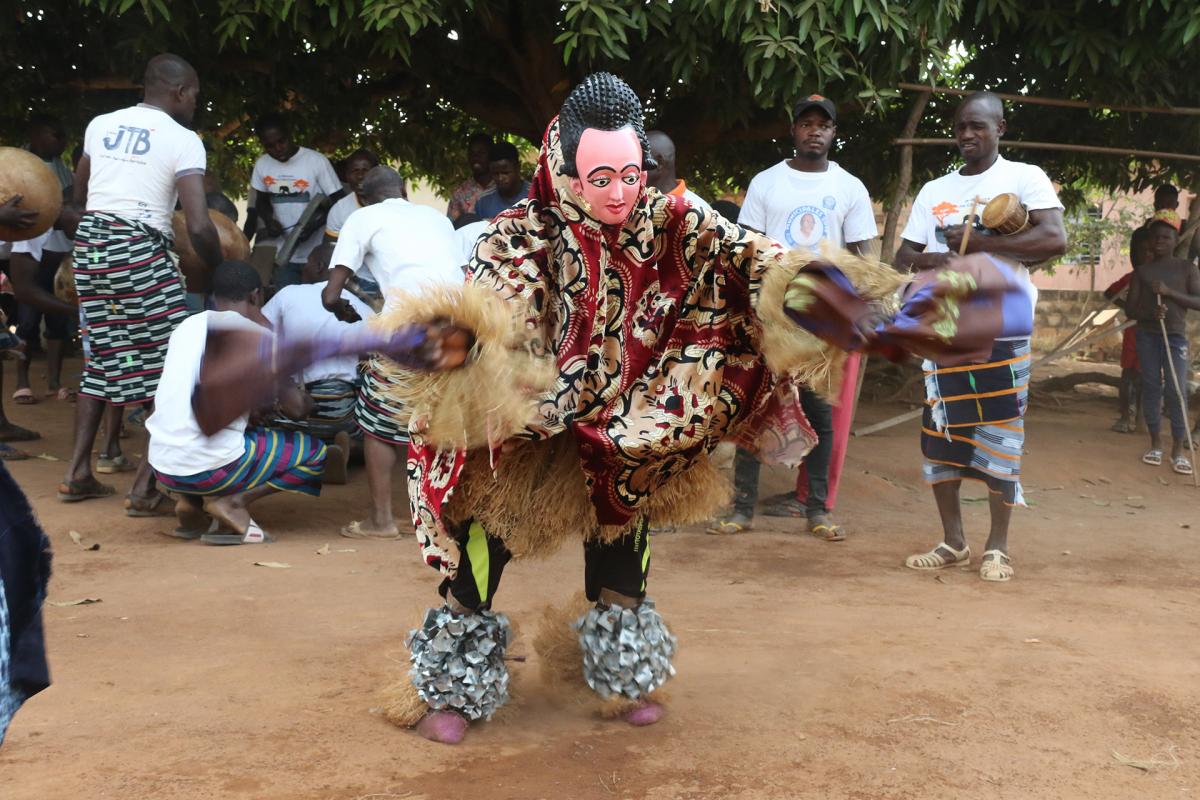
After this mask two more come, even these interpret the Goly dance; they are beautiful, perhaps my favorites: they are completely covered with straw and green strips, obtained from the palms or the leaves of the banana trees; they wear a red, white and black wooden mask that does not depict a man but a sacred animal, in this case a crocodile, but they can also represent pythons and birds.
The dance is frenetic and this time the two masks dance together and no longer separately as in the first Goly dance; they told us that this difference is due to the fact that the first couple of masks came from two different villages, while these two, as they come from the same village, can dance together.
The rhythm inevitably infects us and their fast movements fascinate us; we are hypnotized and fascinated, we would like it never to end!
It was very nice to participate in this event that, even if it was recreated especially for us, was faithful in all to the dances that they practice on special occasions; we are the only tourists present, the other spectators are the inhabitants of the village and of some nearby villages; in the end, even if they are not celebrating anything in particular, it is still a catalyst event for them too.
